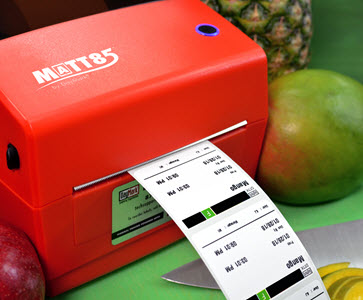Is Your Food Labeling Platform Working for Your Restaurant?
Posted on 10th Apr 2019

Every day, foodservice operators find themselves facing new challenges with food labeling.
Perhaps the biggest change recently took place in May 2018, when new menu-labeling regulations were adopted by the U.S. Food and Drug Administration (FDA). Applying specifically to chain restaurants and similar retail food establishments of 20 locations or more, the law requires that food outlets disclose the number of calories contained in food items on menus and menu boards.
In addition, if food items are marketed in a self-serve fashion (such as on a buffet or at a grab and go station) nutritional information must be posted near the serving location.
To help foodservice outlets comply with these new regulations and customer demands—as well as several other back-of-house needs—many foodservice operators have turned to food-labeling platforms (also known as kitchen automation systems). However, many operators are finding that some of these platforms can be costly, require a long learning curve and offer varied features and benefits.
Because of this, foodservice operators should thoroughly evaluate different systems before making a purchasing decision. For instance, paying more for a food labeling platform does not necessarily offer more features or shorten the learning curve.
To make the selection process easier, here are some questions to consider:
- Does the system offer a comprehensive recipe and/or ingredients database? Supplying accurate nutritional information to the customer depends largely on the amount of ingredients the system can analyze.
- Is the system cloud-based? This is essential, mainly because the FDA guidelines apply to food outlets with multiple locations. A cloud-based system will ensure that every location is on the same page at the same time.
- Does the system allow the user to upload additional supplier-specific databases to enhance the existing database? Added flexibility makes the platform more versatile and valuable.
- Does the system grant the user the ability to easily update menu items to address promotional or seasonal menu items? An agile platform helps operators respond to the changing needs of their guests.
- Can the system accommodate non-traditional food labels? Some systems now print custom die-cut labels for branded grab-and-go items, tamper-evident labels for food delivery and other specialty labels.
- Does the system include recipe information and training videos? This is an essential feature that can reduce the amount of management hours spent training employees.
- Are there hidden maintenance fees or subscription charges associated with the labeling system? Unexpected costs can result in a longer return on investment, and not all food labeling platforms include additional costs.
Selecting the right kitchen automation system has many benefits. Not only will foodservice establishments be better able to comply with the FDA’s new food labeling requirements and deliver a more consistent guest experience, but they will be able to do so with a faster ROI due to lower initial costs.
Article originally appeared on the Restaurant Business website.


